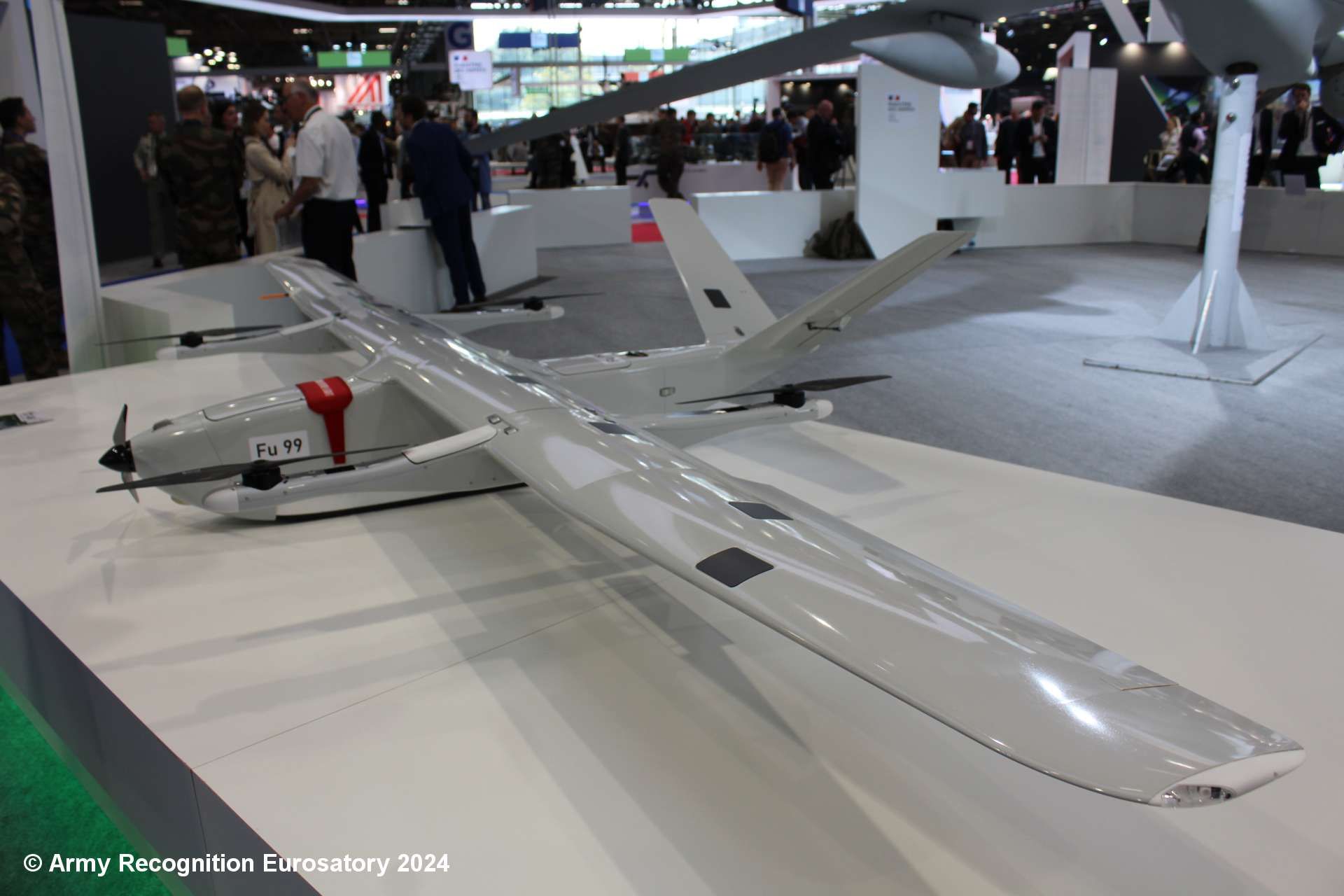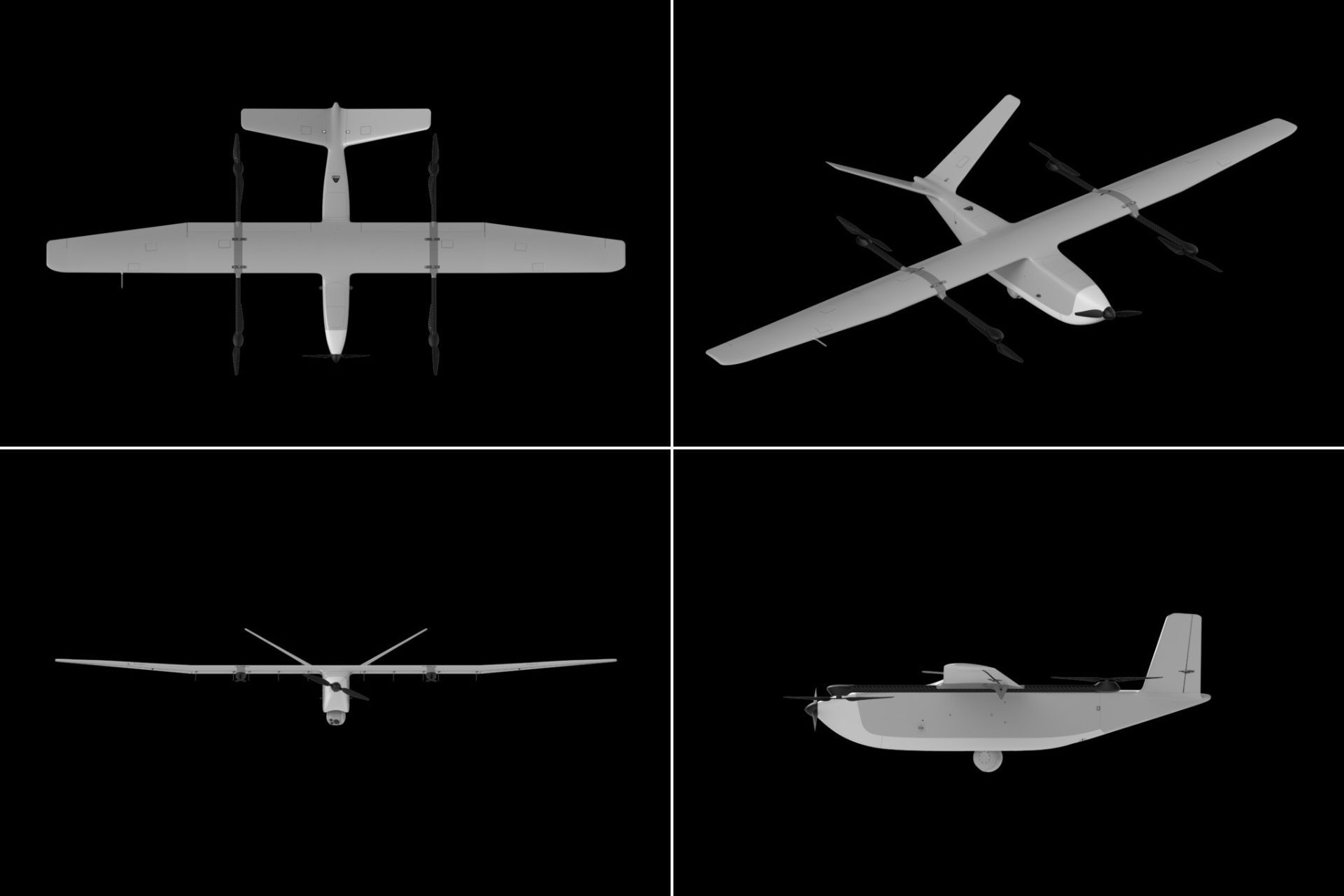Breaking News
France Secures DT46 Drones for Artillery Units to Counter Ukraine Conflict Challenges.
In response to the evolving landscape of modern warfare, highlighted by the extensive use of drones in the Ukraine conflict, France is set to enhance its artillery regiments with the acquisition of the DT46 drone. This move is part of a broader initiative to modernize and increase the operational capabilities of its ground forces. Developed by Delair and showcased at the Eurosatory defense exhibition, the DT46 represents a strategic advancement in military technology, designed to meet the rigorous demands of contemporary combat scenarios.
Follow Army Recognition on Google News at this link

Designed for either vertical takeoff and landing or traditional ramp-assisted takeoff due to its two rotative arms, the DT46 offers notable operational flexibility (Picture source: ArmyRecognition)
The use of drones in modern warfare, particularly for artillery units, significantly enhances operational capabilities by providing precise and real-time intelligence that is crucial for effective targeting and decision-making. Drones equipped with advanced sensors can perform detailed reconnaissance over hostile territories without risking human lives, offering artillery units valuable information about enemy positions, movements, and fortifications. This intelligence is critical for adjusting artillery fire to maximize effectiveness and minimize collateral damage.
Furthermore, the integration of drones into artillery operations allows for a faster response to battlefield changes. They can be deployed to adjust firing solutions in real-time, providing a dynamic and flexible approach to artillery warfare. Drones also extend the reach of artillery units, enabling them to engage targets that are beyond the line of sight or at very long distances with higher accuracy.
Additionally, drones contribute to force protection. They can monitor the airspace and provide early warnings of incoming threats, allowing artillery units to reposition or take cover. This not only enhances the survivability of the artillery units but also maintains their operational effectiveness.
In the context of modern network-centric warfare, drones become part of a larger matrix of interconnected assets. They work in conjunction with other surveillance and communication systems to create a comprehensive situational awareness picture, facilitating coordinated attacks and strategic planning across multiple domains.
Overall, the integration of drones into artillery units represents a transformative shift in modern warfare, combining traditional artillery capabilities with cutting-edge technology to enhance strategic operations and tactical flexibility.

With a flight range of 80 to 100 kilometers and an endurance of up to six hours in fixed-wing mode (Picture source: Delair)
The DT46 drone was prominently featured at the Ministry of the Armed Forces' booth at Eurosatory, signaling its forthcoming integration into the French Army's arsenal. After a development period of two years, two complete DT46 systems, which include two vehicles and two ground control stations, were delivered to the Army's Technical Section (STAT) for operational testing. This drone, also designed for international clients, showcases France's commitment to achieving technological sovereignty in defense.
Recently, the tactical evaluation phase for the DT46 has been completed, and further extensive performance tests are scheduled for the fall. These evaluations will primarily assess the drone's resilience under extreme conditions and its maintenance logistics, ensuring it meets the army's rigorous standards.
The DT46 is equipped for various launch methods, including vertical takeoff and landing (VTOL) or traditional ramp-assisted takeoff, thanks to its dual rotative arms, providing exceptional adaptability for field operations. It boasts a carrying capacity of 25 kg in VTOL mode and 20 kg in fixed-wing configuration, with both setups capable of accommodating payloads up to 5 kg. The drone features a wingspan of 4.5 meters and a length of 2 meters, and it can operate in diverse weather conditions, ranging from -15°C to +50°C and in wind speeds up to 35 knots.
With a flight range of 80 to 100 kilometers and an endurance of up to six hours in fixed-wing mode (reduced to about three and a half hours for vertical takeoffs), the DT46 is also fitted with an advanced optronic pod, enhancing its reconnaissance capabilities. This technology has been successfully demonstrated in field operations in Ukraine, proving its effectiveness in real-world scenarios.
Moreover, the DT46 adheres to the STANAG 4609 standard, ensuring it integrates seamlessly with existing military systems like the ATLAS fire control system and the SCORPION combat information system (SICS). The ground control station, named DRAKO, allows for the flexible management of multiple drones and remotely operated munitions, setting the stage for the future integration of new technologies in army operations.
The use and development of drones in the French army mark a critical transition towards increased modernization and enhanced combat capability. These unmanned aerial systems (UAS) have become essential components of military operations, offering surveillance, reconnaissance, and strike capabilities without endangering the lives of pilots. Drones like the DT46, specifically developed to meet the needs of artillery regiments, illustrate France's commitment to integrating advanced technologies.


























